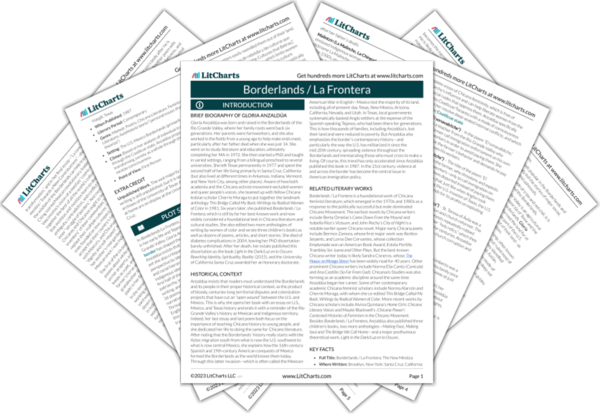The imagery in this poem illustrates what Anzaldúa has called the Coatlicue state. She asks the reader to confront the unknown, uncomfortable elements lurking within themselves. Those who flee from such discomfort fail to grow; those who commit to embracing it may face difficulties at first, but eventually grow to understand their deep-set fears and anxieties so that they can make the changes necessary to heal. By making this kind of deep, uncomfortable introspection a habit (“twice, three times, / a hundred”), people can eventually achieve a kind of power over the self that enables them to live the lives they truly want.
